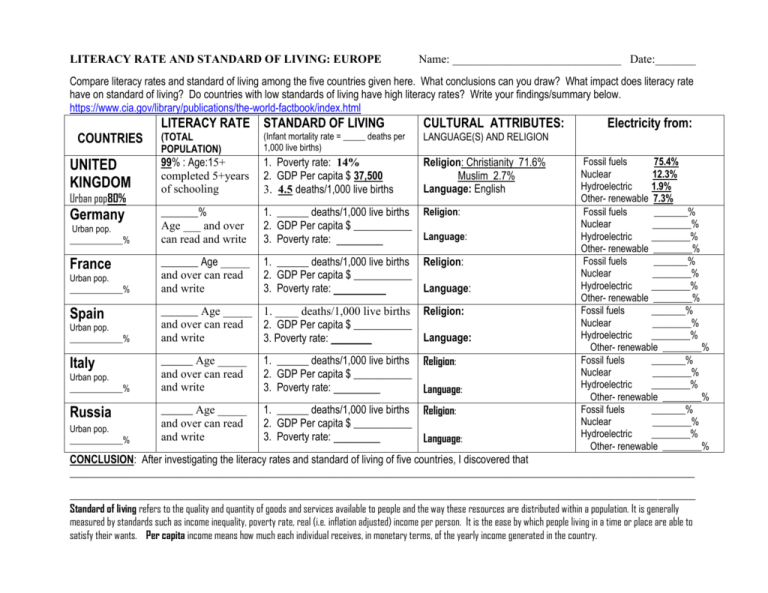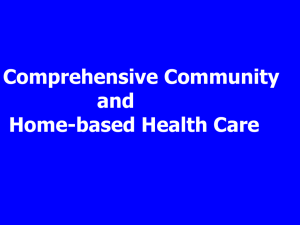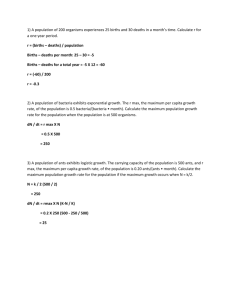literacy rate and standard of living: europe
advertisement

LITERACY RATE AND STANDARD OF LIVING: EUROPE Name: _____________________________ Date:_______ Compare literacy rates and standard of living among the five countries given here. What conclusions can you draw? What impact does literacy rate have on standard of living? Do countries with low standards of living have high literacy rates? Write your findings/summary below. https://www.cia.gov/library/publications/the-world-factbook/index.html COUNTRIES UNITED KINGDOM Urban pop80% Germany Urban pop. ____________% France Urban pop. ____________% Spain Urban pop. ____________% Italy Urban pop. ____________% Russia Urban pop. ____________% LITERACY RATE STANDARD OF LIVING CULTURAL ATTRIBUTES: (TOTAL POPULATION) (Infant mortality rate = _____ deaths per 1,000 live births) LANGUAGE(S) AND RELIGION 99% : Age:15+ completed 5+years of schooling 1. Poverty rate: 14% 2. GDP Per capita $ 37,500 3. 4.5 deaths/1,000 live births Religion: Christianity 71.6% Muslim 2.7% Language: English _______% Age ___ and over can read and write 1. ______ deaths/1,000 live births Religion: 2. GDP Per capita $ ___________ Language: 3. Poverty rate: ________ _______ Age _____ and over can read and write 1. ______ deaths/1,000 live births Religion: 2. GDP Per capita $ ___________ Language: 3. Poverty rate: _________ _______ Age _____ 1. ____ deaths/1,000 live births Religion: and over can read 2. GDP Per capita $ ___________ and write Language: 3. Poverty rate: _______ ______ Age _____ and over can read and write 1. ______ deaths/1,000 live births Religion: 2. GDP Per capita $ ___________ 3. Poverty rate: ________ Language: ______ Age _____ and over can read and write 1. ______ deaths/1,000 live births Religion: 2. GDP Per capita $ ___________ 3. Poverty rate: ________ Language: Electricity from: Fossil fuels 75.4% Nuclear 12.3% Hydroelectric 1.9% Other- renewable 7.3% Fossil fuels _______% Nuclear ________% Hydroelectric ________% Other- renewable ________% Fossil fuels _______% Nuclear ________% Hydroelectric ________% Other- renewable ________% Fossil fuels _______% Nuclear ________% Hydroelectric ________% Other- renewable ________% Fossil fuels _______% Nuclear ________% Hydroelectric ________% Other- renewable ________% Fossil fuels _______% Nuclear ________% Hydroelectric ________% Other- renewable ________% CONCLUSION: After investigating the literacy rates and standard of living of five countries, I discovered that ______________________________________________________________________________________________________________________ ______________________________________________________________________________________________________________________ Standard of living refers to the quality and quantity of goods and services available to people and the way these resources are distributed within a population. It is generally measured by standards such as income inequality, poverty rate, real (i.e. inflation adjusted) income per person. It is the ease by which people living in a time or place are able to satisfy their wants. Per capita income means how much each individual receives, in monetary terms, of the yearly income generated in the country. Literacy rate definition varies from country to country, but the general understanding is: "'Literacy' is the ability to identify, understand, interpret, create, communicate, compute and use printed and written materials associated with varying contexts…” Simply put, it is how well the citizens in each country can read and write. SS6G11.c How does the literacy rate of a country affect its standard of living? How do people’s educational choices affect their standard of living? What role does geography play in a country’s standard of living?






